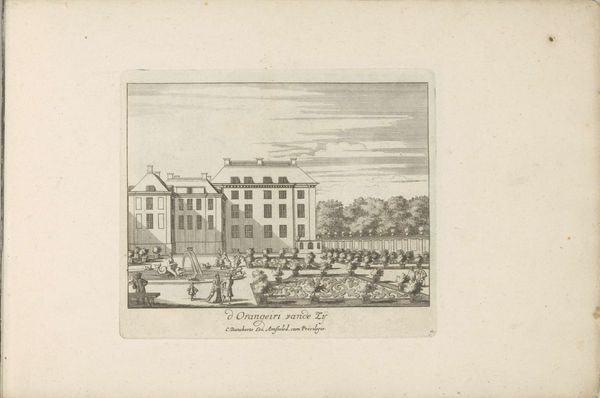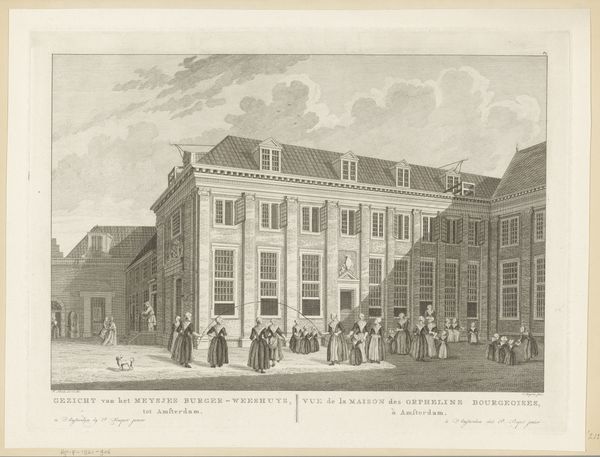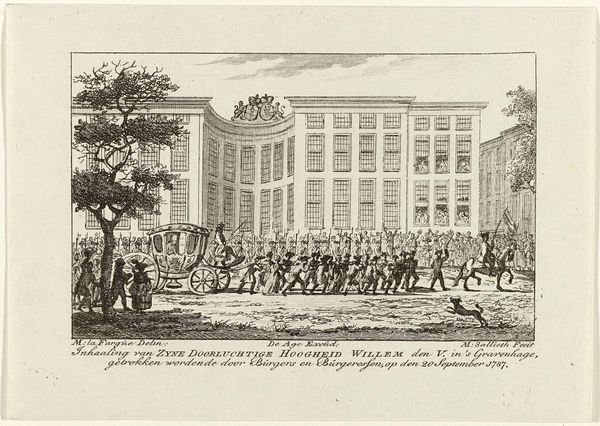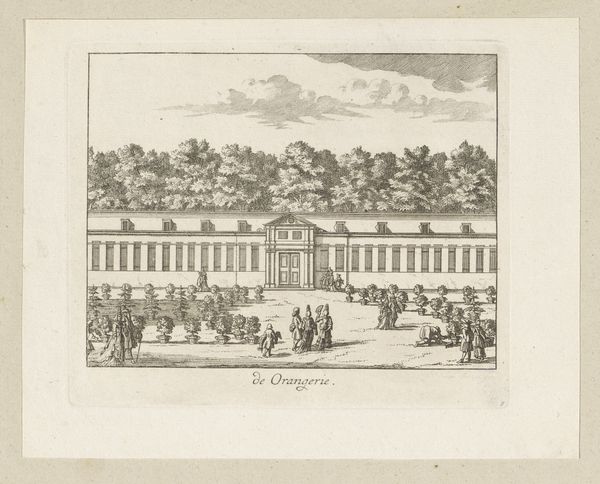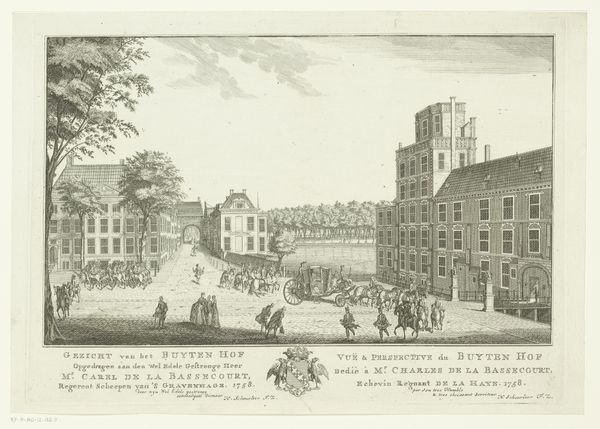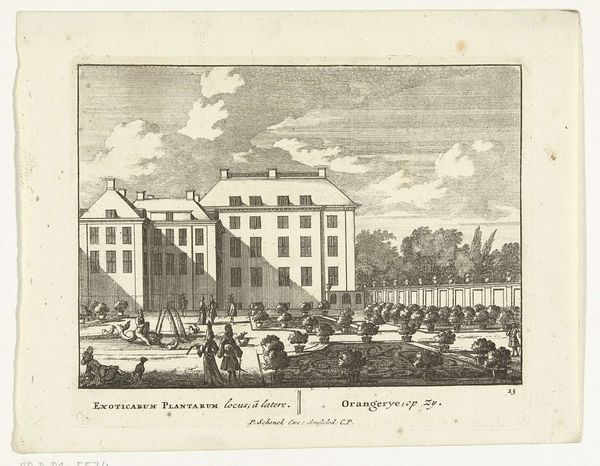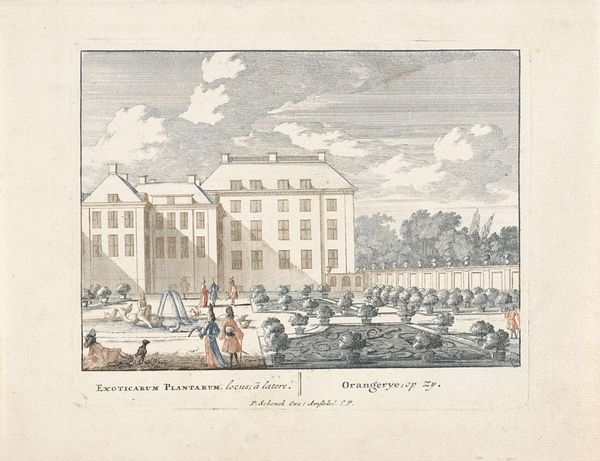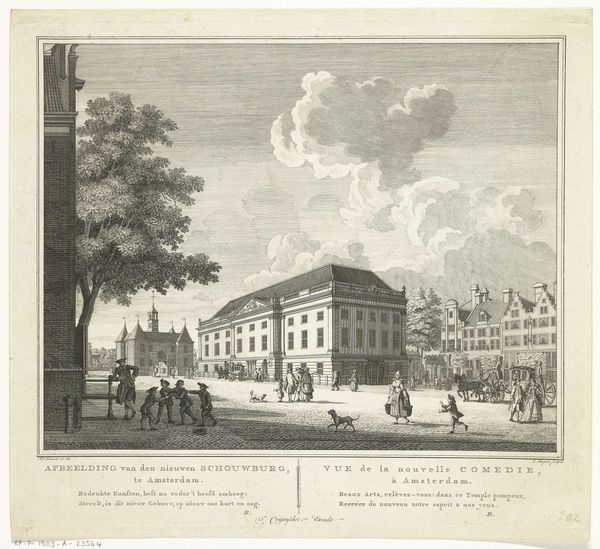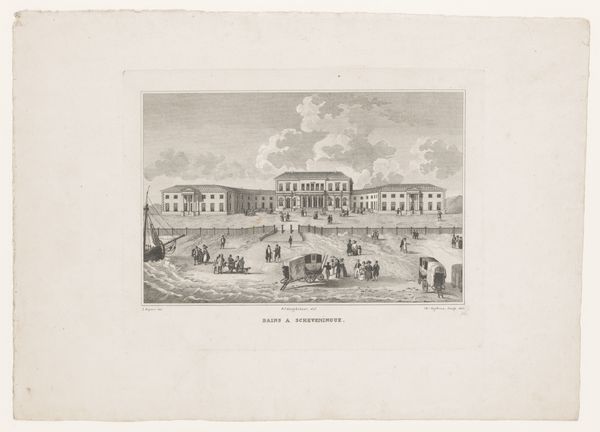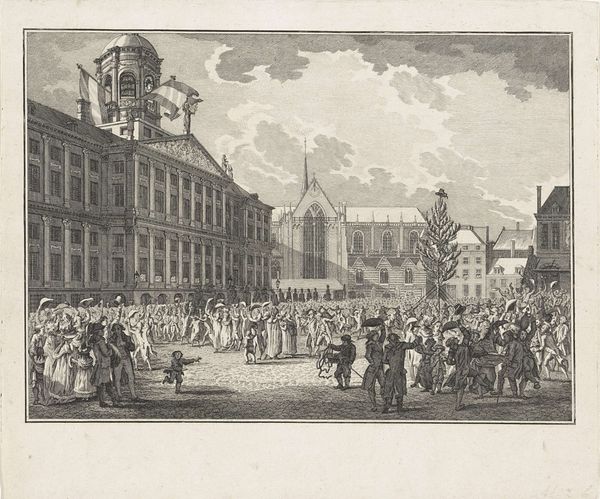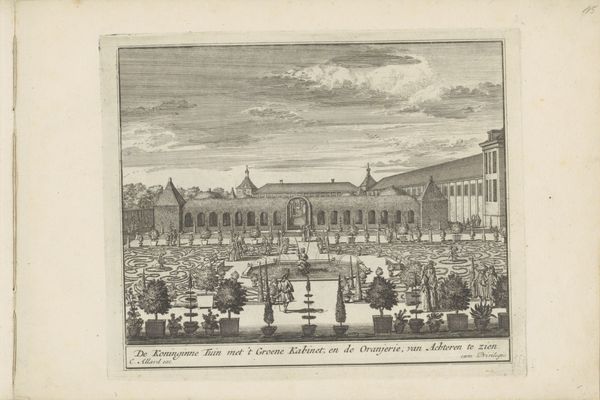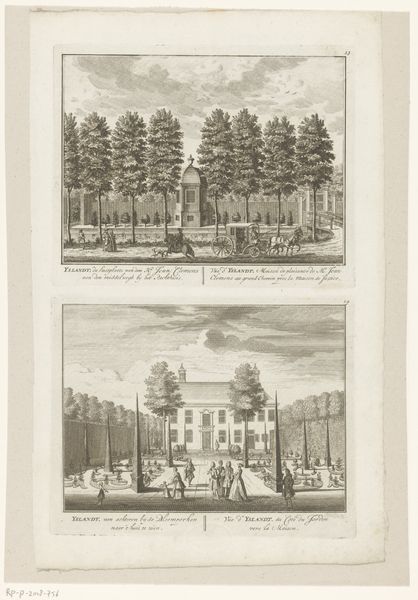
print, paper, engraving
#
narrative-art
#
dutch-golden-age
# print
#
paper
#
cityscape
#
history-painting
#
engraving
Dimensions: height 178 mm, width 136 mm
Copyright: Rijks Museum: Open Domain
Curator: Here we have an engraving titled "Inhaling van de prins en prinses van Oranje, 1787", created in 1788. The artist, alas, remains anonymous. Editor: It feels strangely orderly for a celebration! The lines are so crisp, the people all arranged almost like architectural details themselves. I get this feeling of constrained joy, if that makes any sense. Curator: Indeed. It’s printed on paper using an engraving technique, giving those very precise lines. These prints like this served a vital function – a mass-producible record of significant public events. Notice how it presents two distinct arrivals? Editor: Yes, the one up top is Prince Willem de V, then further below it shows his, arrival with family four days later...There's something deeply unsettling about having people pull those royal carriages instead of horses! Like, look at the physical labor contrasted with the absolute stillness of the royals within. Curator: Absolutely! And that’s exactly the point. The print underscores not just the arrival, but also the socio-political structures underpinning that arrival, the reliance on the populace and the representation of that moment in the printed media of the time. These were times of significant upheaval in the Netherlands, and such images shaped public perception, reinforcing or contesting power dynamics depending on their commission and distribution. This print offers a particular view, of orderly masses accepting the prince’s arrival. Editor: But who was the audience for such prints? Were they truly effective as propaganda? Was anyone really convinced of... of, well, *anything* just from seeing all those tiny, similar-looking people tugging at ropes in such a tidy, formal way? Curator: Good question! It likely reached a wide audience, from the wealthy burghers who might collect prints, to the more politically active sections of society through publications or public displays. And their efficacy… Well, that is open to debate. Images are never neutral. It presented what authority WISHED others perceived, it framed opinions in specific lights and served as key political tool! Editor: It's funny how something meant to celebrate authority can look, centuries later, like evidence against it. Curator: Precisely. Examining the methods of its production reveals, if you will, it’s constructed-ness. Editor: Looking closely at its neat lines and composed masses now has left me with the slightly bitter aftertaste. Curator: It indeed gives another point of reflection of that period, for sure.
Comments
No comments
Be the first to comment and join the conversation on the ultimate creative platform.
